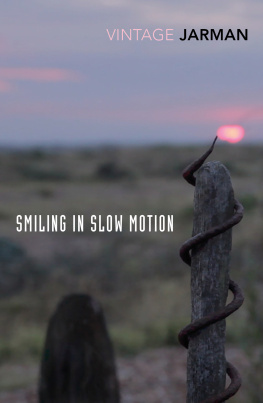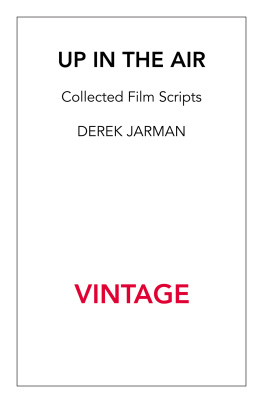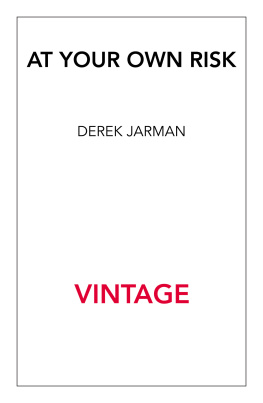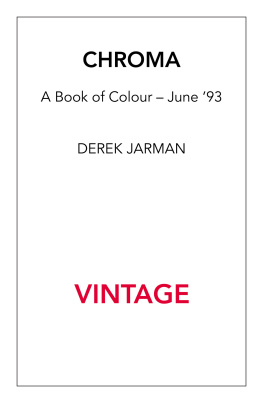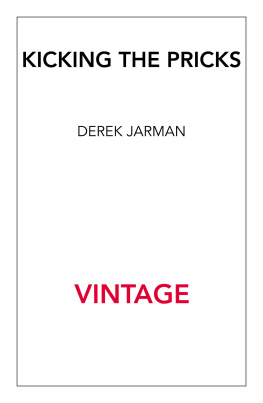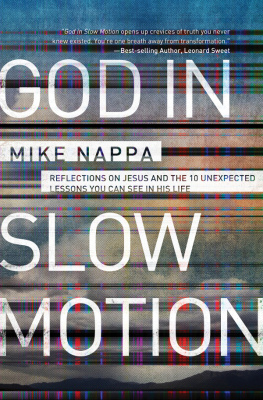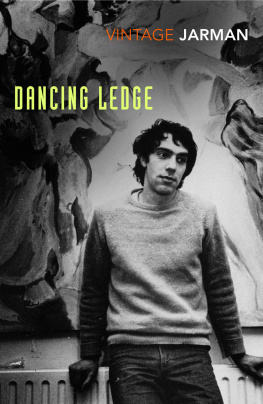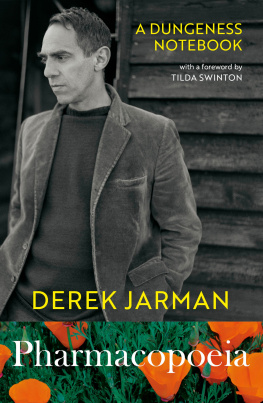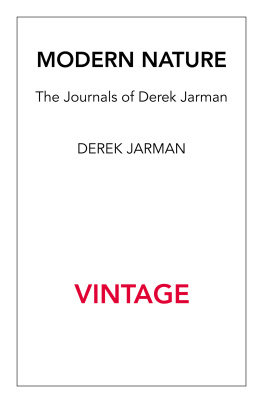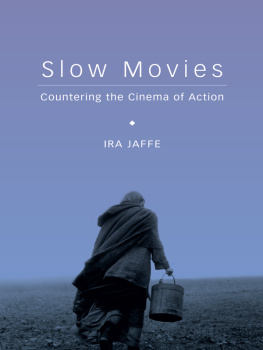Contents
About the Book
WITH AN INTRODUCTION BY NEIL BARTLETT
The life-affirming expression of an artist engaged in living to the full The Times
Smiling in Slow Motion is Derek Jarmans last journal, stretching from May 1991 until a fortnight before his death in February 1994. Jarman writes with his trademark humour and candour about friends and enemies, as he races through his final years of film-making, gardening and radical political protest.
Written from Jarmans Charing Cross Road flat, his famed garden at Dungeness, and finally from his bed in St Bartholomews Hospital, Jarman meditates on his own deteriorating health and the loss of his contemporaries. Yet Smiling in Slow Motion is not simply a chronicle of illness and regret: it is, at its heart, one of endeavour, determination and pride.
About the Author
Derek Jarman was born in London in 1942. His career spanned decades and genres, from painter, theatre designer, director, film-maker, to poet, writer, campaigner and gardener. His features include Sebastiane (1976), Jubilee (1978), Caravaggio (1986), The Last of England (1987), Edward II (1991) and Blue (1993). His paintings for which he was a Turner Prize nominee in 1986 continue to be exhibited worldwide, and his garden in Dungeness remains a site of pilgrimage to fans and newcomers alike.
ALSO BY DEREK JARMAN
Dancing Ledge
Derek Jarmans Garden
Modern Nature
Chroma
At Your Own Risk
Kicking the Pricks
Introduction
Derek Jarman died at the age of fifty-two, on February 19th, 1994. The last entry of these journals was written just two weeks before he died, and this book, which covers the last thirty-three months of his life, was therefore the last work of art that he ever brought to completion.
*
Derek begins this final volume of his journals by talking about how hard he is finding it to get started. No wonder. That month alone May 1991 he had the previous volume of his journals about to come out in print (Modern Nature), a major feature-film in post-production (Edward II) and was working hard on both his actual garden down at Prospect Cottage in Dungeness and on a garden installation for the Design Museum up in London. There was also a lot of background noise going on in his life. The screening on national television by Channel 4 of his homosexually explicit lack-of-costume drama Sebastiane in 1985 had, nearly a decade after that films initial release, transformed Derek from a controversial experimental artist with a dedicated fanbase into a genuinely public figure. He became emblematic of a certain kind of queer life, both for those in the press and public who ardently admired him for his public affirmation of that life, and for those who vehemently loathed him for exactly the same thing; the media firestorm that followed the television screening of Sebastiane ensured that Derek would never again be without attention, both welcome and unwelcome, for the rest of his working life. There were demands on his time from the press, from photographers, from souvenir hunters, from festivals and awards committees. There was a constant stream of communications from people of all ages and backgrounds who simply wanted to tell Derek just how much his work meant to them in the dark times that we were all then going through.
Perhaps the single most important piece of context that any reader needs to bring to this book is the knowledge that by the time he started writing it Derek had been living with HIV/AIDS for five years. He had also been living with the disease publicly. Having been diagnosed as HIV positive in December 1986 he had decided, for the sake of his own self-respect and unlike several of his more famous British queer contemporaries not to conceal the fact.
The significance and bravery of that decision is hard to recapture. 1986 was a whole decade away from the time when effective combination therapies would start to significantly reduce the numbers of fatalities in the British AIDS epidemic. Although in the course of these journals Derek describes going through an experimental course of treatment with AZT, the first antiretroviral to be trialled in the UK, at the point in the epidemic when he was diagnosed both he and his doctors would have assumed (correctly) that he was now living under a death sentence. In addition and this needs stressing rather than being treated with sympathy or compassion, it was usual at this point in the epidemic for HIV-positive people and queer HIV-positive people especially to be treated with blatant hostility. Disgust, blame and contempt were amongst the gentler reactions, especially amongst the senior representatives of the Church of England, the populist press and the Conservative Party. In 1987, for instance, a photograph of Diana Windsor daring to hold hands with a person with HIV without her gloves on had made headlines around the world, such was the degree to which people with the virus were considered pariahs. For someone to declare themselves positive as opposed to doing everything in their power to conceal the fact was a truly extraordinary thing to do.
Strange as it now may seem, the homophobia that swirled around the epidemics casualties was to those such as Derek who were on the receiving end of it not even anything particularly novel. One of the hardest things to now recapture about the time in which these journals were written is the fact that far from being exceptional, the appalling treatment meted out to them was merely a logical intensification of the then near-ubiquitous homophobia facing queer people in the United Kingdom. At best, we were legally discriminated-against second-class citizens in our own country; at worst, we were reviled on a daily basis as an affront to common decency. By way of an illustration, I remember vividly an incident when Derek and I endured this sort of AIDS-intensified homophobia together. In October 1989 I was working as the Master of Ceremonies at a national performance art festival in Glasgow, and had been instrumental in persuading Derek to come up to the festival and create an installation in the gallery of the Third Eye Centre on Sauchiehall Street (Derek talks about the process of conceiving and creating this piece in his previous volume of journals, Modern Nature). The installation featured a crude cage of timber and barbed wire, within which was placed a mattress upon which two (real, live) men or occasionally women could be observed quietly sleeping in each others arms or otherwise idling away the day under a duvet. Meanwhile, the gallery walls around them were covered in tarred and bloodied reproductions of recent homophobic newspaper headlines. It was a highly effective piece, an arresting distillation of the distance between the quiet realities of queer love and the hysteria surrounding their popular misrepresentation. The morning after the piece opened, I was confronted in my capacity as MC for the festival by a customer in the gallerys Caf, a young man who was so incensed to discover from a fellow customer that there were two homosexuals in a room adjacent to the one in which he was having breakfast with his wife and his child that he vociferously demanded that I call the police to have the homosexuals removed and the gallery immediately closed to the public. He wasnt annoyed, or cross; he was white-faced with fury. Derek was out of the building that morning, so it fell to me to talk the man down and get him safely out on to the street without him assaulting either myself or the two boys whose turn it was to be in the bed that morning. And the point of this anecdote is that neither the gentleman in question, nor his wife, nor the other customers, nor indeed I myself thought that the furore that morning was in any way unusual. Derek, when I told him about it, was pleased to hear that everyone was safe but not remotely surprised. It was all a case of business as usual. The man in the Caf thought he had every reason and right to call the police, and expected them to be on his side; for my part, I was only able to handle the situation so calmly because I was by that point in the 1980s completely used to the idea that the mere thought of two homosexuals in the same place at the same time might provoke rage, abuse and the threat of extreme physical violence from somebody who had never even met or seen the individuals concerned.

